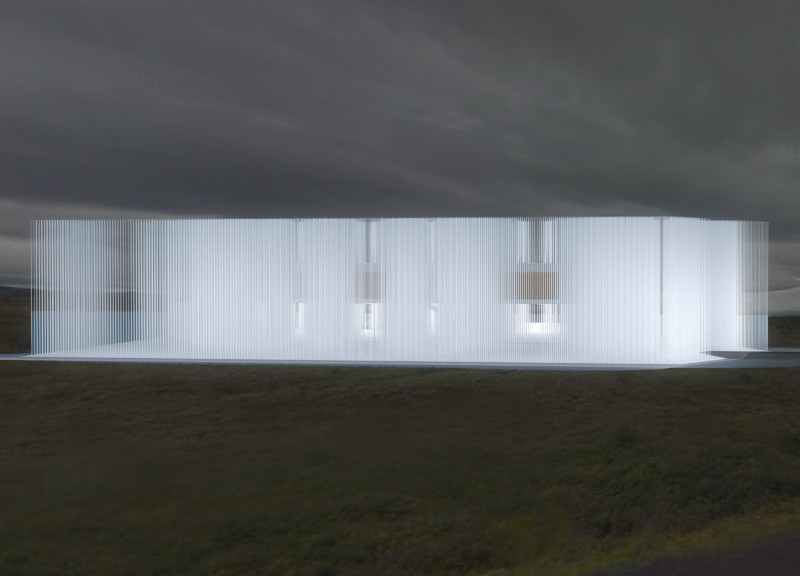5 key facts about this project
The Museum is located in Iceland and designed with a focus on sustainability and connection to nature. It features two fields of slender vertical columns that support an elevated mass. This form creates an engaging visual that interacts with the landscape. The building serves as both an exhibition space and a self-sustaining energy plant aimed at reducing carbon emissions. The integration of piezoelectric technology highlights its commitment to energy efficiency.
Concept and Structure
The design centers around a dense hypostyle created by piezoelectric oscillating energy collectors. This arrangement allows for meaningful connections between indoor spaces and the outdoor environment. The main axis aligns with the nearby Hverfjall volcano, grounding the structure in its setting. This design choice creates visual links that guide visitors through the space, encouraging exploration and interaction.
Light and Spatial Quality
The building makes effective use of sunlight. The column field diffuses natural light throughout the exhibition hall, creating a welcoming atmosphere. This approach reduces the impact of harsh sunlight, especially during Iceland's shorter winter days. The resulting open space is versatile, accommodating various exhibitions while maintaining a continual connection to the landscape outside.
Functionality and Flexibility
The upper level incorporates the hypostyle's framework, allowing for spaces dedicated to offices and a café. This design forms an elevated courtyard at the center, fostering social interactions among visitors. The Exhibition Hall offers flexibility through eight sliding panels that provide adaptable storage solutions, ensuring that the area can adjust to different needs and functions.
The museum’s design culminates in the interaction of light and structure. Shadows cast by the columns shift throughout the day, enhancing the experience for those who enter. The careful relationship between architecture and nature becomes a key aspect of life within the building.





















































